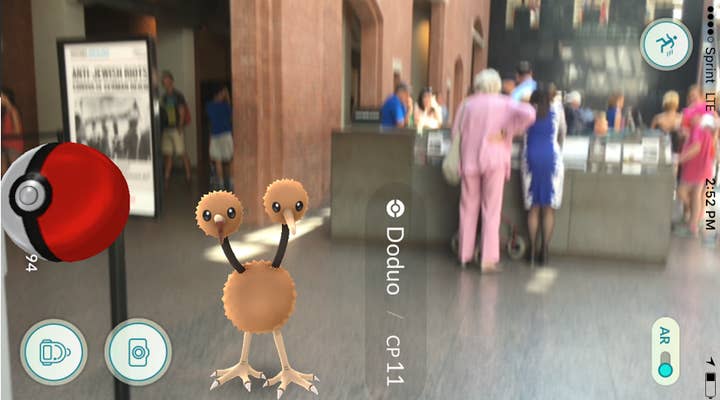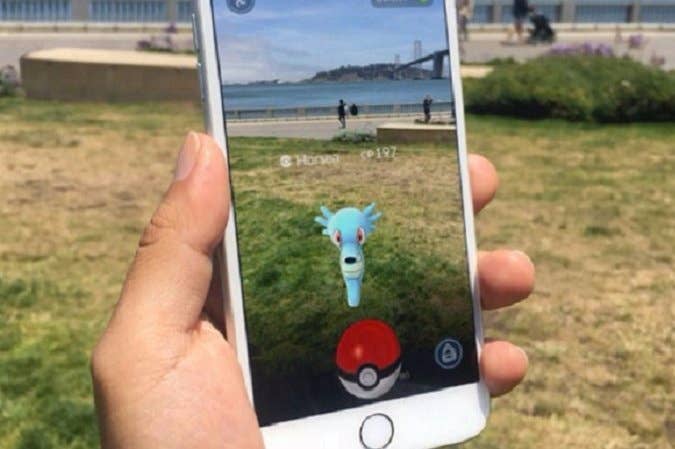Location, location, location: Pokémon GO's unique strength and biggest problem
Niantic eyes sponsored locations just as the complaints from real-world businesses start to roll in
The basis of Pokémon GO's popularity may be found in its cast of iconic creatures, but it's Niantic Inc.'s use of real world locations present the most opportunities - and more than a few problems to boot.
Pokémon GO has been a massive and immediate hit for the Niantic and The Pokémon Company. The game is still only available in a handful of markets, the biggest of which is the US, but it's already sitting pretty at the summit of the iOS and Android top-grossing chart - a landscape so immutable and unyielding that many companies had all but given up trying to access its upper reaches.
Exactly how much money Pokémon GO is making is still unclear, but its impact is already evident in the stock market, where Nintendo's escalating share price has added around $9 billion to its market cap. It should be noted that Nintendo is only a part owner of The Pokémon Company, too, which makes that sharp increase all the more impressive.
The key now is monetisation. SuperData estimated that Pokémon GO made more than $14 million in revenue after four days on the market, but, according to a report in The New York Times, Niantic is already lining up more potential revenue streams. John Hanke, CEO of NIantic, said that it will partner with real-world businesses interested in becoming "sponsored locations," where players will be offered incentives to find Pokémon and collect loot.
"Reports of close calls associated with playing Pokémon GO already are rolling in... No race to 'capture' a cartoon monster is worth a life."
National Safety Council
Niantic implemented a similar model in its last game, Ingress, which combined real locations with AR content in a similar way to Pokémon GO. The difference here, Hanke said, is scale: Ingress amassed 15 million downloads in total and retained around 1 million players a month. Pokémon GO is already "quite a bit beyond" those figures, and it is only just beginning to launch beyond the US, Australia and New Zealand.
"We expected it to be popular, but we didn't expect it to be like this," Hanke said. "We're just getting our feet underneath us."
And Niantic needs to stay grounded, because the ambiguous implications of combining such a popular IP with real-world locations are already becoming clear. Concern over the hordes of Pokémon GO players roaming the streets, one eye locked to a smartphone screem, has already prompted the Australian police force to issue safety advice, and now the US-based National Safety Council has done the same. The organisation warned of the dangers of "distracted walking" and "distracted driving," which have caused thousands of injuries and deaths over the last decade.
"Every single injury and death could have been prevented if pedestrians and drivers stayed alert and prioritised the task at hand. Reports of close calls associated with playing Pokémon GO already are rolling in. The Council urges gamers to consider safety over their scores before a life is lost. No race to 'capture' a cartoon monster is worth a life."
And the issue goes beyond personal safety. A report in The Washington Post has documented the dismay of the city's Holocaust Museum, which became the site of three "Pokéstops" despite the sensitive nature of its collection. The museum's communications director, Andrew Hollinger, said, "Playing the game is not appropriate in the museum, which is a memorial to the victims of Nazism. We are trying to find out if we can get the museum excluded from the game."

The Pokémon Company has since clarified - per Eurogamer - that it has a system in place for buildings and businesses to be delisted from the game. However, that process involves filling out an online form and waiting for the complaint to be assessed, which has the potential to be cumbersome from the perspective of anyone making a complaint and, with millions of Pokéstops and Gyms already out there, a significant time-sink for Niantic.
"PokéStops and Gyms in Pokemon Go are found at publicly accessible places such as historical markers, public art installations, museums and monuments," a Pokémon Company spokesperson said. "If you want to report inappropriate locations or content, please submit a ticket on the Pokémon GO Support website https://support.pokemongo.nianticlabs.com."
The question now is whether Niantic and The Pokémon Company are as willing to engage with the issues that arise from their use of real-world locations, as well as the commercial possibilities.




.jpg?width=291&height=164&fit=crop&quality=80&format=jpg&auto=webp)




